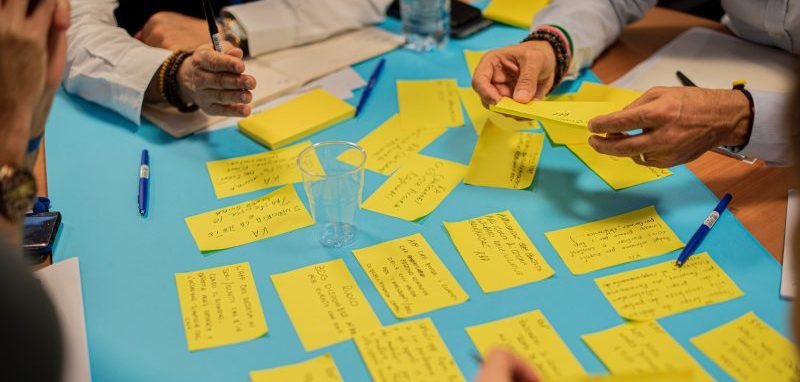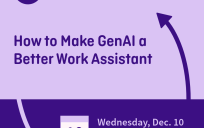Disagreement within teams may be completely normal, but it doesn’t mean it’s easy.
Especially when you are tackling high-stakes crises like COVID-19 infection, differences in opinion and approach can seem even more critical than usual.
How do you navigate and overcome these differences to ultimately carry out the mission and serve your community?
The team that created Colorado’s Exposure Notifications solution experienced its share of differences throughout the product journey.
“There were some tough disagreements especially when we were seeing that certain parts of the population were not being served by the product,” said Janell Schafer, Digital Service Expert at the Colorado Digital Service. Schafer spoke with other government and industry panelists at GovLoop’s online training Thursday.
The members of the cross-functional team all recognized the gap, but the points of contention lay in how they could improve the experience. For instance, the development and architecture team opposed certain approaches due to concerns of fraud and abuse.
In the midst of those disagreements, the ability to hear colleagues out was key. “There was a lot of consensus-building, trust and leaning into people’s concerns because they are valid,” Schafer said.
Then, taking an incremental approach to test the value and impact of a solution was the compromise to navigate differences.
“We were able to take this tiny, bite-sized approach that captured what we had identified as the problem space,” Schafer said. “From there, as people saw [success] on a small scale, that created comfort.” Working incrementally helped build trust and buy-in from those who may have been in opposition at first. From there, the whole team felt surer about scaling out the pilot project. And now, the feature is being launched globally and across various states, Schafer said.
Incremental work can help you navigate conflict too. But before you jump in, here are some insights and advice to implement.
Equity Pauses
The Colorado team incorporated “equity pauses” throughout their processes, where they stopped to reflect on the impacts of the product and remind themselves of the goal and purpose of the solution – the people being served. Exercises like this brought the whole team together and created space to both see the full picture and have open discussions.
“It sets up the framework to have those conversations and tough disagreements because there is trust established across the group, as well as an anchor back to why we’re doing what we’re doing and how,” Schafer said.
Early Stakeholder Buy-In
In Louisville, ensuring the solution’s stakeholders are on board from the beginning is critical to navigating disagreements and conflict, said Grace Simrall, Chief of Civic Innovation and Technology for Louisville Metro Government.
For example, work that is solely done by the innovations team without the product owner looped in – whether that’s the IT organization or Louisville residents, depending on the project – increases the chance of the product not being helpful to them.
The key question becomes: How do you demonstrate value quickly and make sure stakeholders are part of the process, so the ultimate owners accept it?
“Having them a part of the process from day one so they’re ready to receive it when it’s handed off is important to making sure innovation lasts,” Simrall said.
Demonstrate Value
Damien Eversmann, a Senior Solutions Architect at Red Hat, agrees. It’s as simple as this: “If you don’t demonstrate value to the user, they are not going to use it,” Eversmann said. It has a lot to do with trust. Without proving the benefits of a particular solution, users won’t trust it.
“You need to demonstrate that value, that benefit to the user, whether it’s government employees or citizens,” Eversmann said.
This online training was brought to you by:





Leave a Reply
You must be logged in to post a comment.